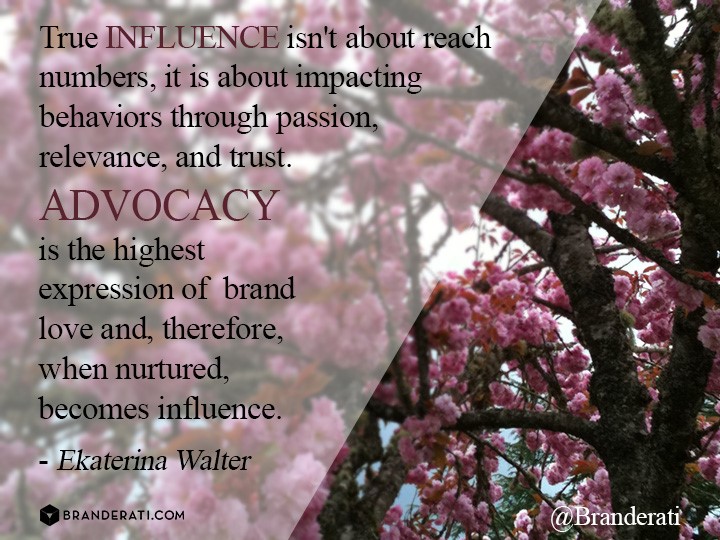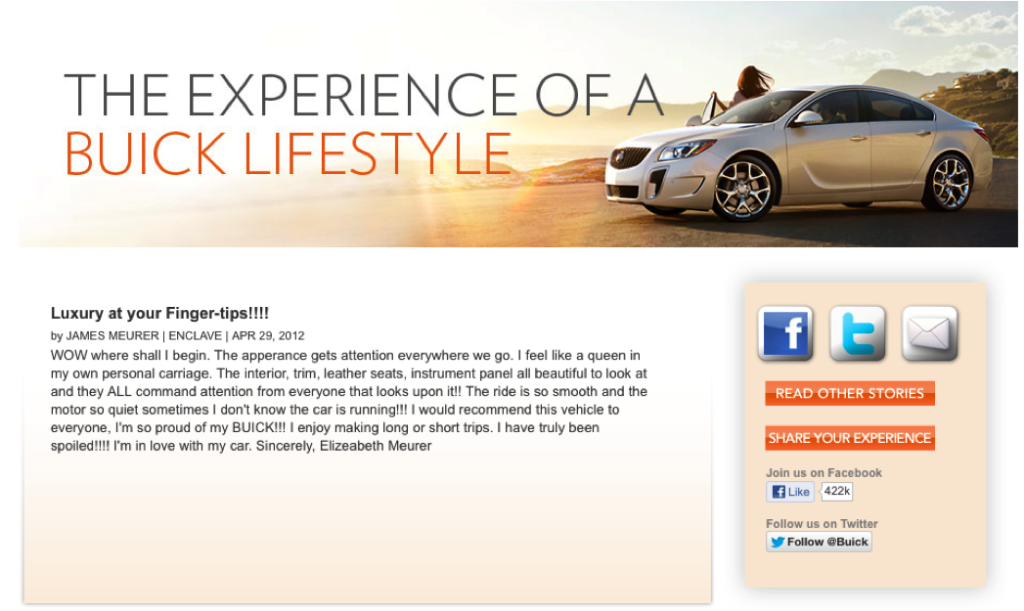With the decline of traditional media and its effectiveness, brands have been turning to brand advocates to get their message across to potential customers.
Brand advocates are existing customers of a brand who are the biggest fans of that brand and who are passionate about the brand and its products. They don’t need an incentive to spread their love and ignite a word of mouth (both online and offline), because they are emotionally invested in brand’s mission and its story.
Neilson’s 2012 survey of global trust in advertising found that 92 percent of respondents trust recommendations from people they know, and 70 percent trust consumers’ opinions posted online. And this isn’t the only data point that speaks to the power of advocates. At BRANDERATI we have put together a deck of the 26 stats marketers should know about advocacy that you might find interesting.
The most powerful thing about organic advocacy is the story behind customer’s experience. And because the endorsement is not paid for by the brand, and the story is something others can truly connect with, it becomes a great motivator in getting others to act on the endorsement. Advocacy, done right, becomes true influence. And influence is what impacts behaviors. Because the ultimate goal of marketing is to not just to tell a great story, but tell a story that would make people want to get to know a brand and buy the product. And that’s what advocacy is all about.
Many brands have been turning to customers, asking them to tell their own stories and putting their own fans center-stage. By giving their most vocal advocates a platform to share their own experiences the brands are effectively turning their brand love into authentic influence. Brands are able to spark engagement around real stories from real customers in real-time, thus massively increasing the reach of their message and driving impact to company’s bottom line.
Let’s take a look at several examples.
Buick
Buick wanted to change perception of its brand, and they thought the best way to do this was to ask their own advocates why they love their Buicks and to share their stories. In only a few weeks, Buick advocates had written over 1,600 love letters and 16% of advocates had shared them on Facebook. The individual stories were magnified, thanks to the brand power of Buick – individuals were given a corporate platform and their stories reached further than they would have on their own.
One marketing problem that faces a brand like Google is that, although it is a truly massive, global brand, it is very hard to represent their services in a visual way. To give their marketing a human quality, Google asked customers to tell their own stories of the ways in which Google had changed their lives, their organizations or their businesses.
The results were commercials that were inspiring, touching and emotional – quite a feat from a software company. This one from Mark Kempton, whose survival of the Queenland flooding depended on his rescuers using Google Maps, has been viewed over 5.5 million times on YouTube, and brings an individual story to a global audience.
Weight Watchers
 For Weight Watchers, sharing customers’ stories is about inspiring others and giving credibility to their diet plan. They use celebrities for many of their campaigns, but they also give a platform to their ‘ordinary’ fans who have used their plan to shed the pounds. Their website, magazine and marketing all feature many stories of real people who have lost weight through Weight Watchers – so you can find someone just like you to use as a role model. The company is always on the look-out for success stories so that they can provide a constant stream of positive messages to inspire their customers through their online and off-line channels.
For Weight Watchers, sharing customers’ stories is about inspiring others and giving credibility to their diet plan. They use celebrities for many of their campaigns, but they also give a platform to their ‘ordinary’ fans who have used their plan to shed the pounds. Their website, magazine and marketing all feature many stories of real people who have lost weight through Weight Watchers – so you can find someone just like you to use as a role model. The company is always on the look-out for success stories so that they can provide a constant stream of positive messages to inspire their customers through their online and off-line channels.
Conclusion
To tell customers stories effectively you need to connect with fans and ask them to tell you about the difference your product or service has made to their lives. Sharing their story widely can help their individual tales reach a much larger audience than they would ordinarily. Your brand platform combined with your customers’ inspirational stories can lead to a winning combination of advocacy and influence. But to do so effectively and in a sustainable way, you have to build authentic relationships with your advocates and fans long-term. Without that you will just create another short-term marketing campaign, whereas what you are really looking for is inspiring a movement around your brand, your mission, your story.
Originally appeared on Mack Collier’s blog


